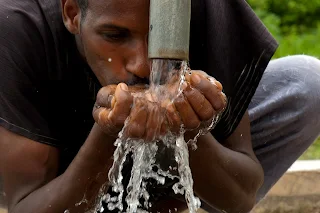Collecting Water in Africa: Water Jerry Cans and Private Water Tankers
Collecting Water in Africa: Reality, Challenges, and Hope
In Africa, collecting water can be dangerous and exhausting. Imagine: you grab two large jerry cans, fill them with water, and walk four miles through woods and over hills in the blazing sun. Now imagine doing this every single day just so your family has water to drink, cook, and bathe.
In many African cities and villages, people may spend six hours traveling just to find clean water. It sounds extreme — but for roughly 1 in 7 Africans, this is daily life. Women, wives, daughters, mothers, and sisters often wake up before sunrise to begin the trek while it’s still cool.
They keep walking at 8 a.m., 9 a.m., and beyond until they reach a river or a functioning pump. Each full jerry can weighs around 40 pounds. The return journey is slow, hot, and back-breaking — often made while risking harassment or assault. The average distance women in Africa walk for water is about 3.7 miles (6 km) every day.
A jerry can was originally designed for fuel, but in much of the world it’s now a lifeline for carrying water. Imagine hauling 80 pounds of water uphill over rocks or through areas affected by conflict — with no guarantee the water will be safe.
Water sources can fail if pumps aren’t maintained.
Why Clean Water Is Still So Hard to Access
Across Africa, more than 400 million people live without safe drinking water. Those who can afford it often buy water from private tanker trucks, spending up to $50 a month.
Key obstacles include:
- Lack of skilled personnel to maintain pumps and systems
- Water scarcity and pollution in some regions
- Weak institutions and infrastructure
- Limited financing for water projects
“Inadequate financing is the single most important factor affecting the continent’s fresh water delivery abilities,” explains Peter Akari, Chief Water Policy Officer at the African Water Facility (African Development Bank).
In rural areas, wells and pumps may be installed but later fail because there’s no long-term maintenance plan or budget. Building a pump isn’t enough — keeping it working matters most.
Infrastructure often fails because of unpaid bills, illegal connections, and aging pipes.
For example, Ghana’s public water utility once served half the country but could not sustain operations due to unpaid bills, illegal hookups, and old, leaking pipes. In South Africa, about 19% of rural residents lack reliable water, and two-thirds have no basic sanitation. Over a quarter of schools and nearly half of clinics have no water access.
Women and girls often walk hours every day for clean water.
Ethiopia shows the challenge clearly: despite having rivers and groundwater, 83% of rural Ethiopians still lack safe water, and nearly 80% have no sanitation. Water scarcity and poor infrastructure trap families in unsafe conditions, reducing health, education, and economic opportunity.
Related Reading
- African Tea vs. Southern Sweet Tea — A Cultural Comparison
- Cooking with Shea Butter Oil
- The Worst Female Serial Killers in History
- Indigenous Healers and Traditional Plant Medicine
Together, awareness can spark change. Share this to help everyone understand what collecting water really means for millions of African families.





